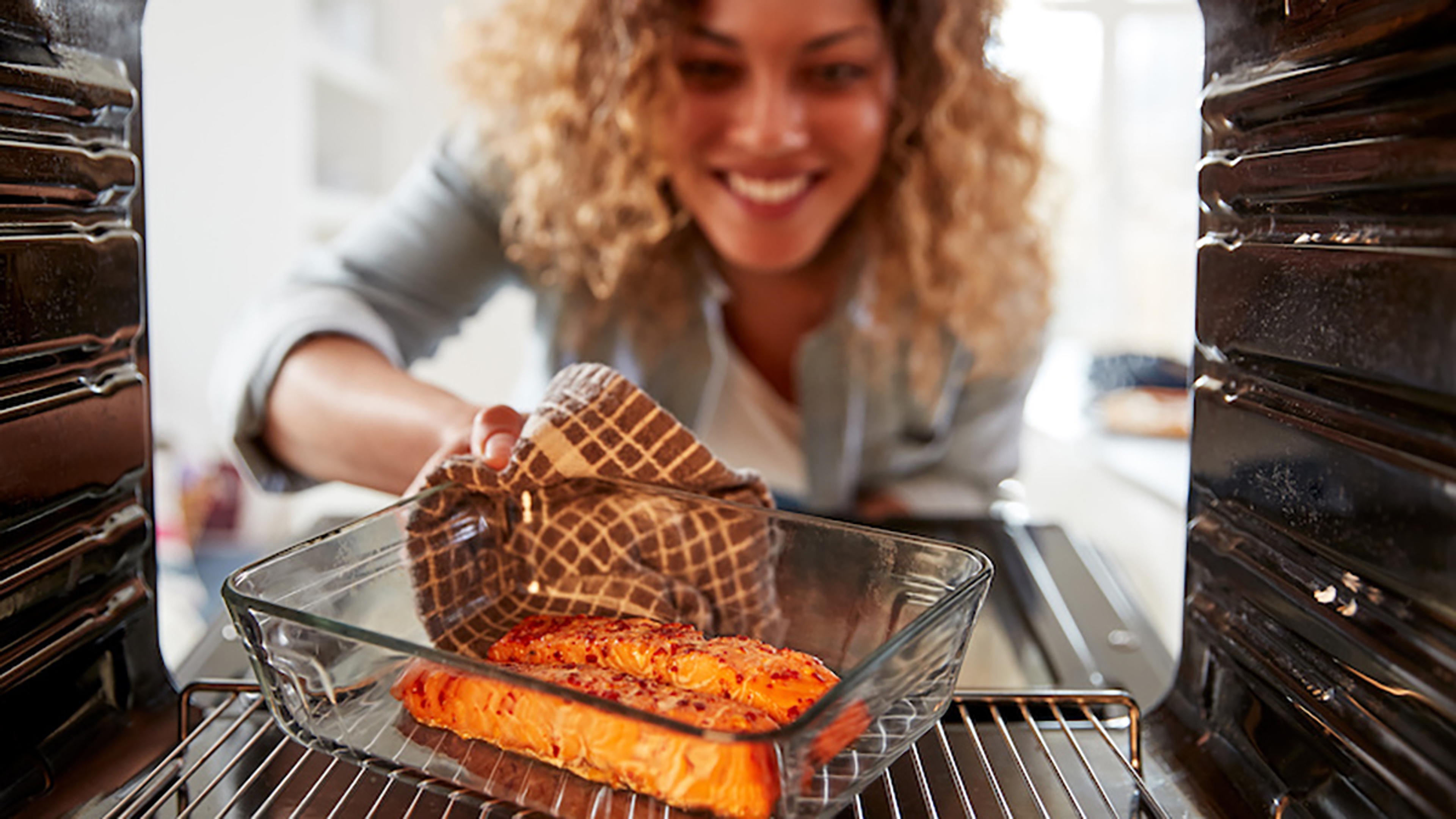There's nothing quite like a perfectly cooked fillet of salmon, sea bass or cod. Delicately perched between under- and overheated, the perfect degree of doneness may seem daunting to achieve, but there's no need to flounder (we'll stop). We've got six tips for cooking fish that will help.
Undercooked seafood can lead to foodborne illnesses - though frozen seafood, properly thawed, greatly reduces that risk - while overcooked seafood can be tough and rubbery.
So let's take these tips for cooking fish one step at a time.
Fresh is better, fresh-frozen is best
The first step: ensure that it is fresh, which nearly always means "freshly thawed" as never-frozen seafood is rare in retail markets.
Fresh seafood should be firm to the touch, with a mild , pleasant "oceanic" smell. If it has a fishy odor or is slimy or mushy, it is likely not fresh and should not be consumed.
When buying, look for clear, bright eyes and shiny skin, or better yet, simply buy frozen and vacuum-packed seafood from a reputable purveyor.

Let's get cooking!
Once you have determined that your seafood is fresh, it's time to cook it. The appropriate cooking times vary depending on the type of seafood and the cooking method, but here are some general guidelines for cooking different types of seafood.
You'll note the target internal temperatures are consistently 145°F or 63°C. This is the case regardless of whether you oven-bake, fry, steam or grill your seafood.
6 tips for cooking fish & seafood
Fish
Cook fish until it flakes easily with a fork. The internal temperature should be 145°F (63°C). The flesh should be opaque, not translucent.
Shrimp
Heat shrimp until they are pink and firm. The internal temperature should be 145°F (63°C), though their small size as a practical matter typically prevents using an internal thermometer, so go by eye. Overcooked shrimp will be tough and rubbery.
Scallops
Cook until they are opaque and firm. High heat will provide a tasty sear, but that makes it all the more important to pull the scallops off immediately when done. The internal temperature should be 145°F (63°C). Overcooked scallops will be tough and dry.
Lobster
Boil or bake lobster until the internal temperature is 145°F (63°C) in the thickest part of the tail. The shell will turn bright red and the flesh will be opaque.
Crab
Boil crab until the internal temperature is 145°F (63°C). The shell will turn bright red and the flesh will be opaque.
Clams and mussels
Cook these until their shells open. Discard any that remain closed. The internal temperature should be 145°F (63°C).
Taking the temperature
When cooking seafood, use a reliable cooking thermometer to ensure that it's cooked to the proper internal temperature. Be sure to insert the point of the thermometer into the center of the thickest part of the fillet.

Note that the digital age has seen the advent of wireless bluetooth and wifi-enabled cooking thermometers, available online, that make temperature monitoring effortless. Even within a sealed oven or grill, your phone will beep to let you know your seafood is done perfectly.
Once you gain some experience, you may find you can dispense with the thermometer and depend on the "flake test" for fillets of fish. Just insert a fork into the thickest part of the fish and gently twist. If the fish flakes easily, it's fully cooked. If it's still translucent and refuses to part when the fork twists, it needs more time.
The bottom line: don't be daunted! Even a fillet that's a trifle overcooked can be delicious, nutritious, and a treat for the whole family. With practice, you'll find a seafood meal is among the quickest and easiest meals in your repertoire.







